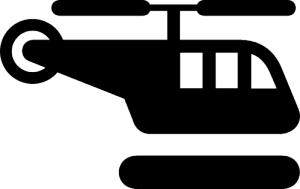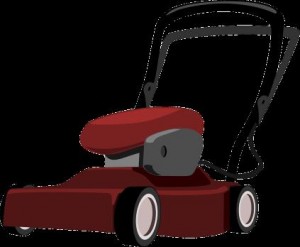This is part one of a three-part series.

As parents of school-age children transition out of summer and into fall, we add to our daily list of things to think about. Making friends. Having the right outfit. Knowing the latest terminology for inappropriate recess conversations. I don’t know about you, but I think this list of concerns goes for my kid, too.

But is there such a thing as too much when it comes to parenting, especially as we ponder our kids heading back to school? More importantly, why do we spend time assessing parenting as if it were a lesson in prepositions? As in, OVERparenting. OVERprotective. OVERdoing it. It’s easy to find pieces written that contain judgment towards parents who hover, micromanage, or insert themselves loudly and proudly into children’s spaces. There are also entire organizations and websites devoted to asking parents to self-assess and read articles by experts. We live in a world where we scrutinize our decisions as parents, and we have no trouble finding resources that can help us with what I like to call The Parenting Scrutiny Project. This goes for parents who are judged to do too little, and those who are judged to do too much.

I must admit that there is good that can come from this. After all, I descend from a certified parent educator whose ideas are brilliant and whose love for all children and their parents is immeasurable, and I would never advocate neglecting children and their needs. To avoid self-awareness and love as a parent doesn’t feel right. I’m probably a better parent if I think about whether listening to my son is a better choice than ignoring him when he comes home from a science class that made him squeamish because they showed a real sheep brain. But as a sociologist, I would assert that even labeling ignoring a child as bad, as well as the best way to demonstrate self-awareness and love, are themselves socially constructed.
This scrutiny would occur in our own heads naturally, I suppose, but the proliferation of news stories, typologies, and listicles about parenting sure does make this more likely. The scrutiny occurs both inwardly and outwardly, perpetuating a simultaneously individualistic and other-centered ethos. This can be deemed good (let’s help each other build a sharing community of parents and incorporate those ideals into our own families), or bad (the world revolves around me and my stressful neoliberal parenting project, and others are terrible at it). I recognize that it’s a risky road to traverse by offering yet another writing about parenting. But the twist here is that I am offering some words about why we keep seeing so much about parenting, what metaphors we use to describe it, and why our national context may matter for both.
Overprotective Parenting Metaphors: Helicopters, Curlers, and Lawnmowers
There is no shortage of metaphors in international academic and popular venues for overprotective parenting, which I like to refer to as Parentus Overprotectus. Images of tigers, snow plows, blackhawk helicopters, curling brooms, and lawnmowers are introduced, debated, compared, and replaced, seemingly continuously. Objects and animals and inclement weather are anthropomorphized into anxious caretakers of little ones with varying scary traits, as if naming a style of parenting just right might help to prevent the next generation from hitting their heads or using their heads without any help from a grown-up.
But the proliferation of overprotective parenting metaphors itself may fuel the parental anxiety that persists.
Search online and you will easily encounter columns about the pitfalls of overprotective parenting, occasionally with a new term introduced to give parents a broader vocabulary to refer to their own anxiety. Just as easy to come across are stories about how parents from other countries are happier because they do not overparent or overprotect; rather, they value children’s independence and exposure to adult themes and emotions so that their children will be better off. We see reports about the lessened physical activity of children because their parents are afraid to let them play outside, which ultimately leads to a “protection paradox” – where the protection of kids from harm diminishes children’s skills to combat future harm. We also see news stories about parents who are criticized for not hovering enough because they allow their children to play alone on playgrounds. I’m fascinated by the endless stream of research and commentary on this phenomenon and the metaphors that are introduced within it.
Protection of children by adults is culturally constructed. When I return to the U.S. from research trips to Scandinavia I tell stories of babies sleeping in baby carriages outside in the cold winter air to colleagues whose jaws drop just as they remember that they should probably not drop their jaws in polite conversation. “How can that be safe? They are not protected from the elements! Let alone strangers walking by!” they argue. To this, I respond with my usual discussion of how the Scandinavian good childhood is defined by early childhood education scholar Judith Wagner as one where children can be independent, where there is a lot of social trust, where democracy is ensured when children are allowed to be on their own, and where brisk air on cheeks is seen as good for the skin and the soul, starting at birth. The variations in how parents parent across cultures, and in what is defined as good and bad, and over and under, is what I mean by cultural construction. But even scholars and friends who already accept this variation sometimes find themselves with dropped jaws.
Overprotective parenting metaphors exist in different forms in different geographic locations. And the metaphors seem to be multiplying. In one U.S. source that has a chapter discussing “Hyper-Parenting,” I counted no fewer than twelve (twelve!) types of parents who are overprotective, overinvolved, excessive. This leads me to two questions, which are the subject of the next two posts: first, does the process of constructing a metaphor for overprotective parenting tell us about the culture, time period, and discipline in which it was created? And second, why are we seeing a proliferation of metaphors used to describe overprotective parenting across cultures?
Stay tuned to the next installment, where I consider the overprotective parenting metaphors from three places where I have spent lots of time living, researching, teaching, and parenting: helicopter parent (in the U.S.), curling parent (in Denmark), and lawnmower parent (in England).
Michelle Janning is Professor of Sociology at Whitman College in Walla Walla, Washington, and serves as Co-Chair of the Council on Contemporary Families. She has taught and served as a pedagogical consultant for the Sociology and Child Development and Diversity programs at the Danish Institute for Study Abroad. She also let her son ride public transportation in Copenhagen by himself when he was eight years old. More about her can be found at www.michellejanning.com.

Comments